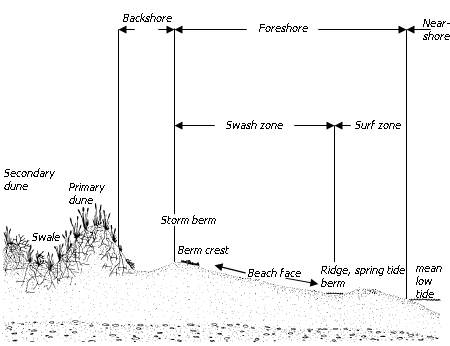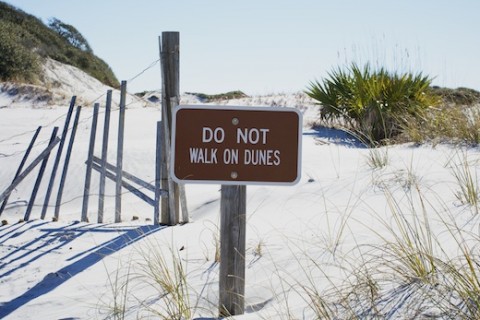Did you know beach grass actually holds sand dunes in place through a subterranean system of woven roots?
While out east everyone is talking about the proposed erosion control district, I thought it was a good time to highlight nature’s very own perfect erosion control system. It is a subterranean sand-dune-dwelling thing that can tunnel its way to the surface through 20ft of sand… but it is not from a sci-fi movie… it is beach grass.
Our very own American beach grass is native to most of the Atlantic shoreline. It can withstand salt spray, wave overwash, wind, heat, excessive sunlight, and sandy soil with low nutrients (http://www.mass.gov/czm/tips/beachgrass.htm). At the front-line, where the ocean crashes into land those traits are a necessity. Beach grass, unlike any other plant, has evolved perfectly to survive the tough conditions at the oceanfront and to literally shape it.
From the sand, shoots grows vertically to reach the sun at the surface. As the overwash and wind push sand along the shore, the vertical shoots halt the movement of the sand and it is able to collect. This is how a sand dune grows. With the sand accumulation the stem grows higher, meanwhile the old stem continues to hold down the sand below.
But what is to keep the dunes from washing away with opposing forces of flood, westerly winds (which bring no sand), and human trampling? The roots of beach grass also spread horizontally and create a subterranean netting holding down sand stabilizing the dune (http://www.wildflower.org/plants/result.php?id_plant=AMBR). It looks like this:
Unlike regular lawn grass, beachgrass is sustainable. It does not drain the water table or require pesticides to grow. And the tough resilience of beach grass makes it easy to plant and maintain (zero work). So my one quick tip this week for aiding in preserving the environment on the east end is to plant beach grass. It prevents erosion, saves water, requires no pesticides and serves as a crucial habitat for many species such as frogs. If you are not in a position to plant beach grass or recommend it over a lawn then please:


This Post Has 0 Comments